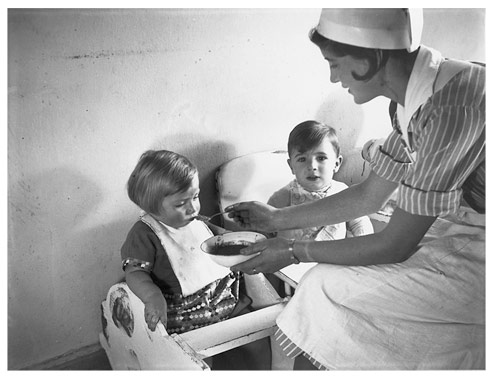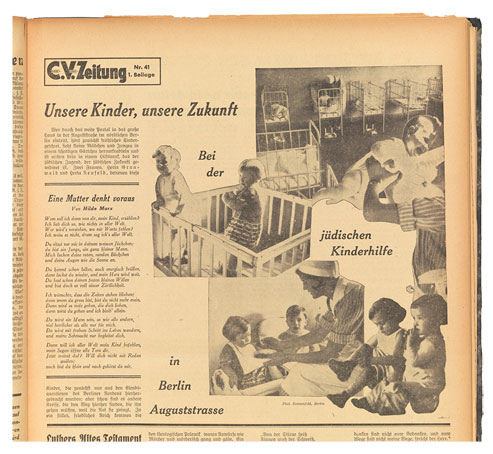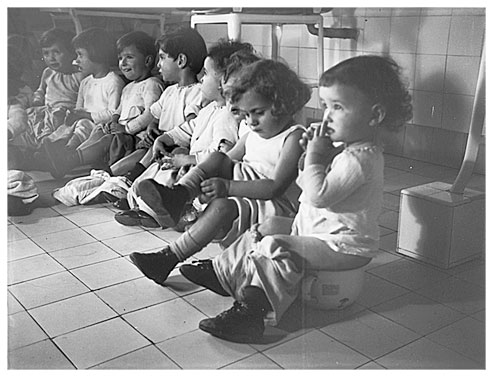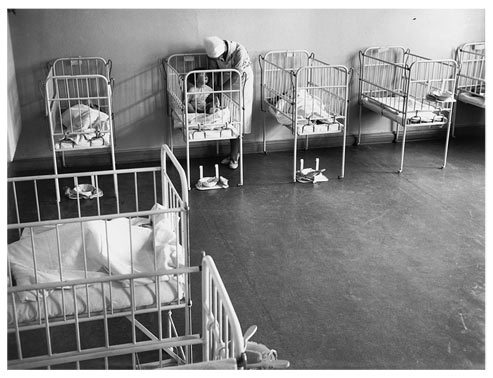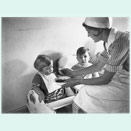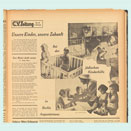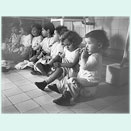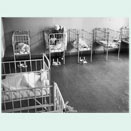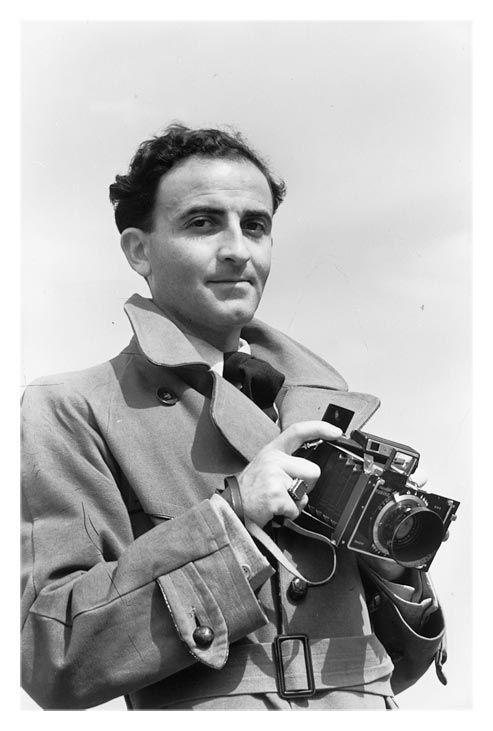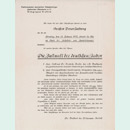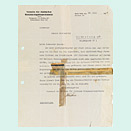Thursday
26 October 1933
The daycare center of the Jewish Children‘s Relief Organization in Auguststrasse in Berlin
"An aid organization dedicated to Jewish youth and our Jewish future"—this is how the author of an article published in the CV-Zeitung on 26 October 1933 describes the Jewish Children‘s Relief Organization at Auguststrasse 14/15 in Berlin. The article is illustrated with a collage of photos by Herbert Sonnenfeld showing children with childcare workers.
The Jewish Children‘s Relief Organization was founded in 1920 and originally looked after children primarily from the "slums in the north of Berlin." However, in 1933, due to the consequences of Nazi legislation, members of "other social strata" were making their way there, "forced by hardship," as the article explains. The restrictions imposed in this period affected not only the parents and their children who were cared for at the center, but also its staff. The dedicated childcare workers included "young girls who have been forced to interrupt their medical or legal studies [and] are now enthusiastically and cheerfully devoting themselves to this great organization and supporting themselves through this work."
The building in which the organization was located was built in 1861 to serve as a Jewish hospital and was used as such until 1914. Several social welfare groups affiliated with the Jewish community moved into the building after the First World War. In 1933 they included not only the Jewish Children‘s Relief Organization but also the Ahawah children‘s home, the kindergarten run by the orthodox Agudas Jisroel association, a home economics school and a student dormitory. In addition to its daycare center, which was established in 1923, the Children‘s Relief Organization ran a children‘s polyclinic with five departments, offices providing counseling on infant care and child-rearing, and a department for recreational welfare. It also offered school courses for mothers. According the CV-Zeitung, more than 20,000 people were treated or received counseling at the building each year, making it one of the most important Jewish self-help facilities in Germany.
In 1936 the Jewish Children‘s Relief Organization moved to Blumenstrasse near Alexanderplatz with all its departments. It was dissolved in 1943.
Aubrey Pomerance
